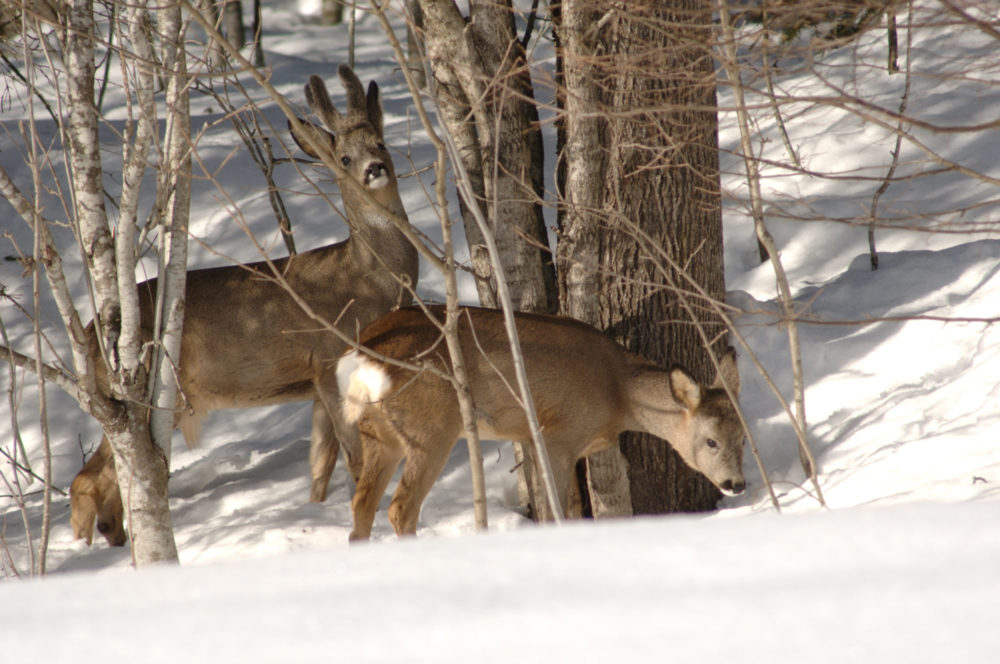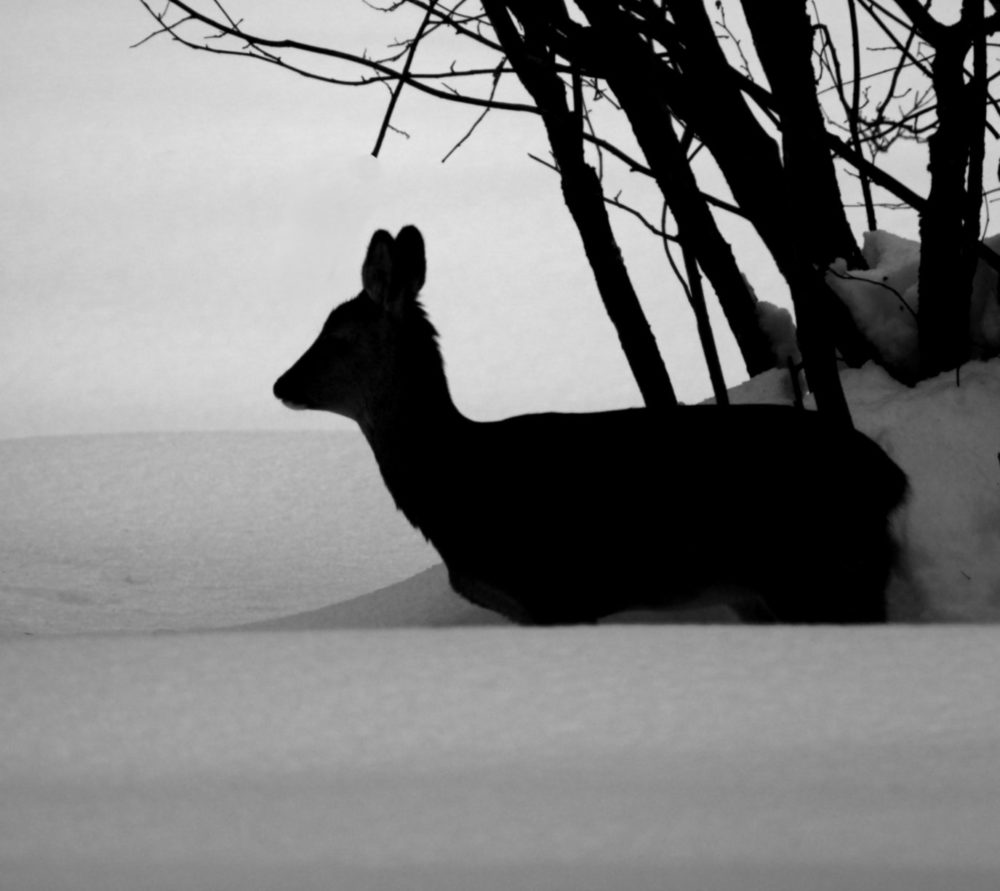Roe deer
The small roe deer is quite a new species in Norway, having arrived here around 1900. The roe deer has made itself at home in forests and the cultural landscape across much of the country, where it grazes in small groups. Male roe deer are called bucks, the females are does and the young are fawns or kids.
Roe deer facts
Latin: Capreolus capreolus
Family: Deer (Cervidae)
Height: 70 – 74 cm
Weight: 25 – 30 kg
Breading season: July – August
Number of calves: 2 – 3
Lifespan: 7 – 8 years
 Roe deer tracks
Roe deer tracks
The tracks left by the little roe deer are small and pointed. They can resemble sheep footprints, but are more pointed at the tip. The dew claws are only visible if the tracks are deep.
How does the roe deer live?
In Norway, the roe deer lives in small family groups or alone. The way they live varies slightly from season to season. The roe deer’s breeding season is in summer, with roe deer bucks marking their territory and chasing competitors away from May onwards. They make a barking sound at this time of year.
The bucks will set up territories, and the largest bucks with the best grazing will be most attractive to the females. They will get to mate with the most females, or “does” as they are called.
For the doe, spring and summer are mainly about raising her fawns (young). She will spend the summer alone with them. The baby fawns will lie concealed on their own for extended periods while the mother is out grazing. She returns to the fawns to give them milk. Although the mother goes off to graze without her young, she is usually not far away. She will keep to quite a small area and chase off other female roe deer who approach. This is to prevent competition for food, and to avoid drawing the attention of predators to the area. The more roe deer there are at any given place, the more likely it is that a predator will be able to find them. After a month or so, the fawn will accompany it’s mother.
In winter, roe deer may form larger groups. Animals of both sexes can now congregate.
The roe deer has many enemies throughout it’s life. The baby fawns may be eaten by foxes and eagles, while adult roe deer are popular prey for lynx, wolves and us humans.
What does the roe deer eat?
The roe deer grazes on a variety of different grasses, herbs, leaves and shoots in summer. In winter, it mainly grazes on trees and shrubs, eating buds, twigs and bark. Easily digestible trees like rowan, aspen and willow are most popular – and frequently most accessible, as they often grown densely in felled areas, as well on the margins of ditches and fields.
It is not rare to se roe deer in urbangardens thoughout the year as they eat on garden, flowers, bushes and trees.

Where does the roe deer live?
The roe deer as a species is not really very well adapted to the Norwegian winter. Large amounts of snow can quickly cause problems, and it prefers to graze on nutrient-rich plants, which are usually found in the cultural landscape. This means that the roe deer does best in woodland that is close to fields, and in the vicinity of our residential areas, where they can find food in our gardens. Roe deer like to graze in our flower beds and nibble our fruit trees.
Because roe deer live in such close proximity with us humans, predators for which roe deer are an important food source come closer too. The lynx is a good example of this.

How many roe deer do we have in Norway?
We probably have about 150,000 roe deer in Norway. The roe deer population can grow and shrink slightly from year to year. Hard winters can cause a lot of roe deer deaths, and a large lynx population in an area can also have an impact.
Learn more about roe deer:
You can learn more about wild reindeer from the following sources: